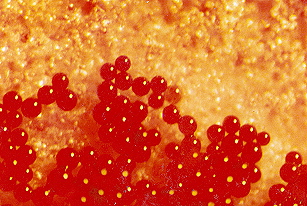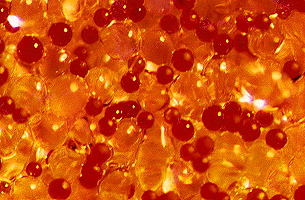Mesh and Sieve
If you know the mesh range of your beads or packing, you can get the nominal particle size. For example, many column packings are 200 - 400 mesh, corresponding to 37 - 74µm, and are sometimes called out as 40 µm. This means that a P3 or medium frit with a pore size of 16 - 40 µm will not clog when used to support a nominal 40µm packing. See a short series of photos below that illustrate this issue.
Peptide synthesis beads are typically 100 - 200 mesh, which would translate to 74 to 149 µm. Our understanding of real life is that there can be considerable statistical variation in peptide synthesis bead size depending on the manufacturer.
Mesh and sieve opening relations are shown below.
| Mesh # | Sieve opening, µm |
|---|---|
| 400 | 37 |
| 200 | 74 |
| 170 | 88 |
| 140 | 105 |
| 100 | 149 |
| 80 | 177 |
| 60 | 250 |
| 40 | 420 |
(US Standard ASTM 11-61)
The following series of photos illustrates the changing relationship between peptide resin beads (constant diameter) and various fritted discs (changing particle size) ie. the red-dyed resin beads remain constant in diameter contrasting to the increasing frit porosity. We used the American designations for these photos, but have also indicated the European closest equivalents, as well as some additional distinctions.
With the extra coarse frit pictured at the bottom, you can see that the beads begin to snuggle between the glass particles, clogging the pores.
Thanks to Dr. Ron Zuckermann, formerly at the Molecular Foundry at Lawrence Berkeley Laboratory, for his help with this series.
American Medium porosity frit: 10-15 µm.
European correspondence: P4 10-16 µm
Resin beads are fully supported on top of the fritted disc.

American Coarse porosity frit 40-60µm.
European correspondence: P2 40-100µm.
European correspondence: P3 16-40µm.
The glass particles in the fritted disc are approaching the diameter of the resin beads.

American Extra Coarse 170-220µm.
European correspondence: P0 160-250µm.
Additionally
European correspondence: P1 100-160µm.
The glass particles are larger than the beads, causing the beads to clog the frit pores.



